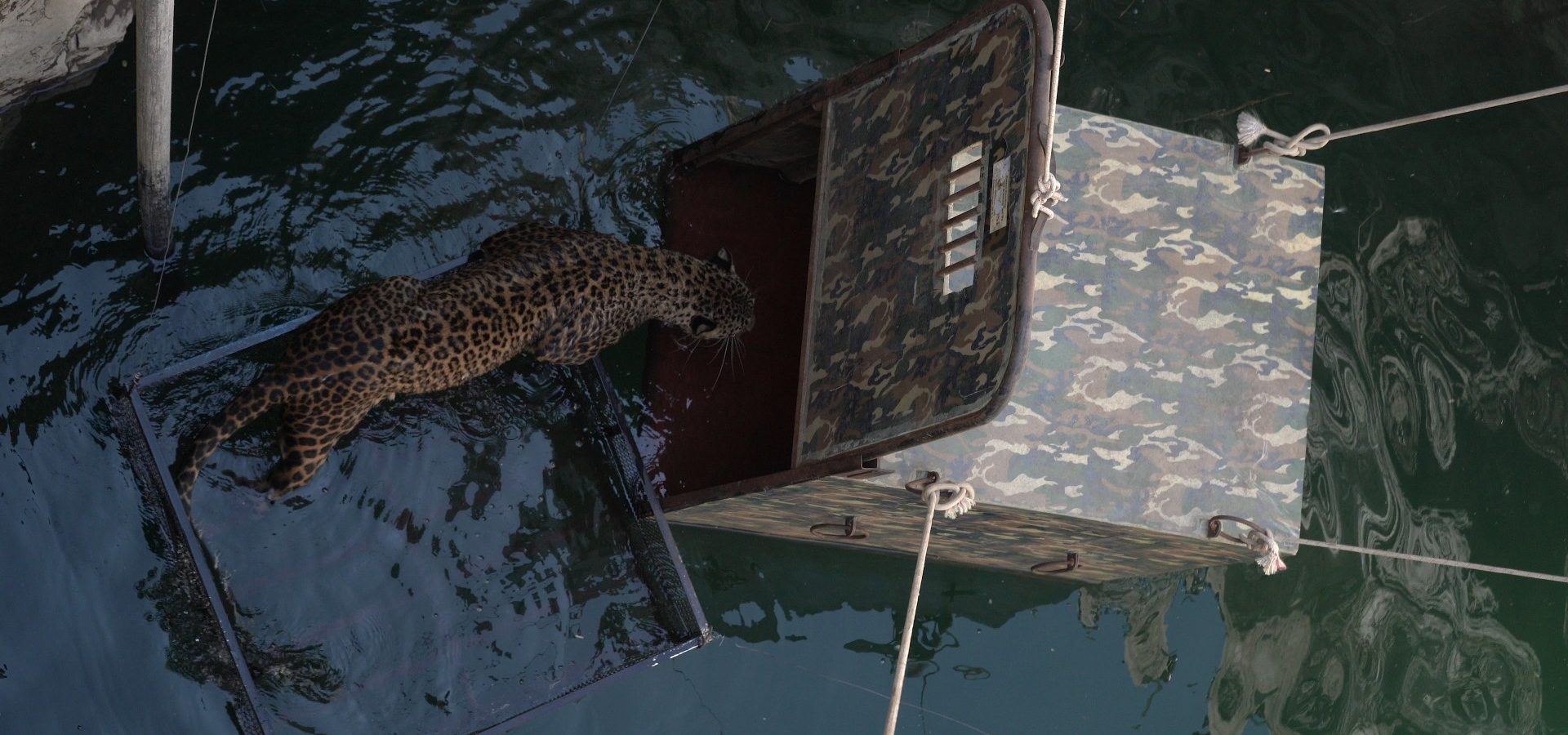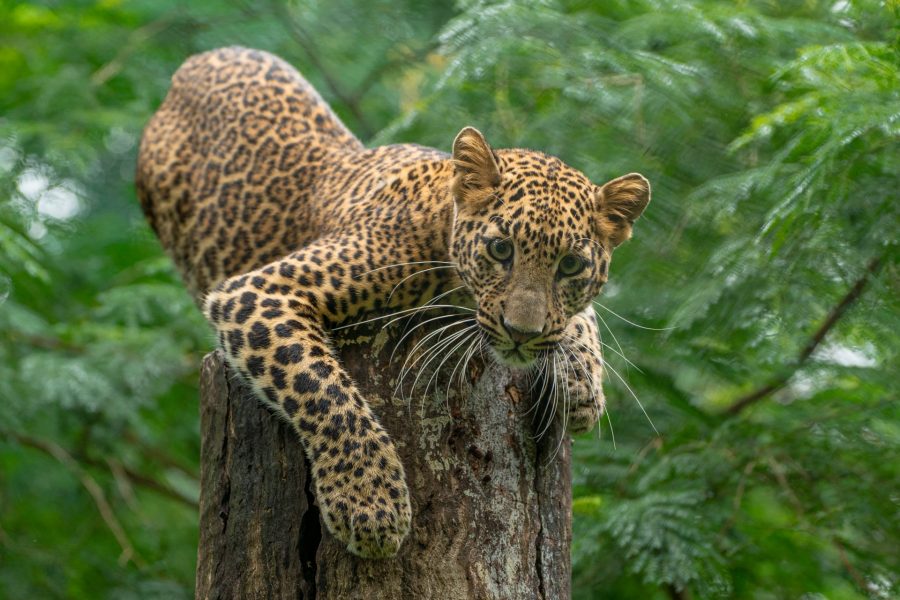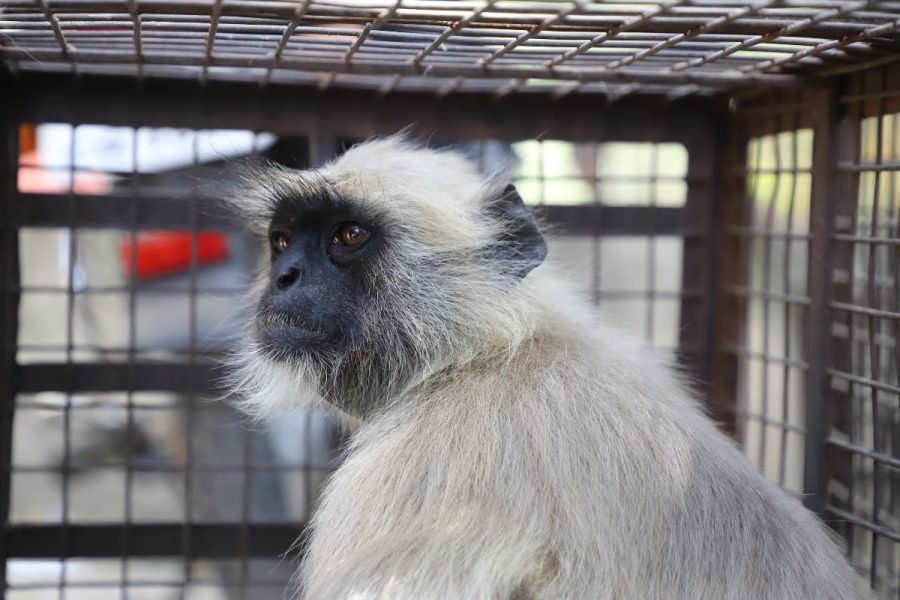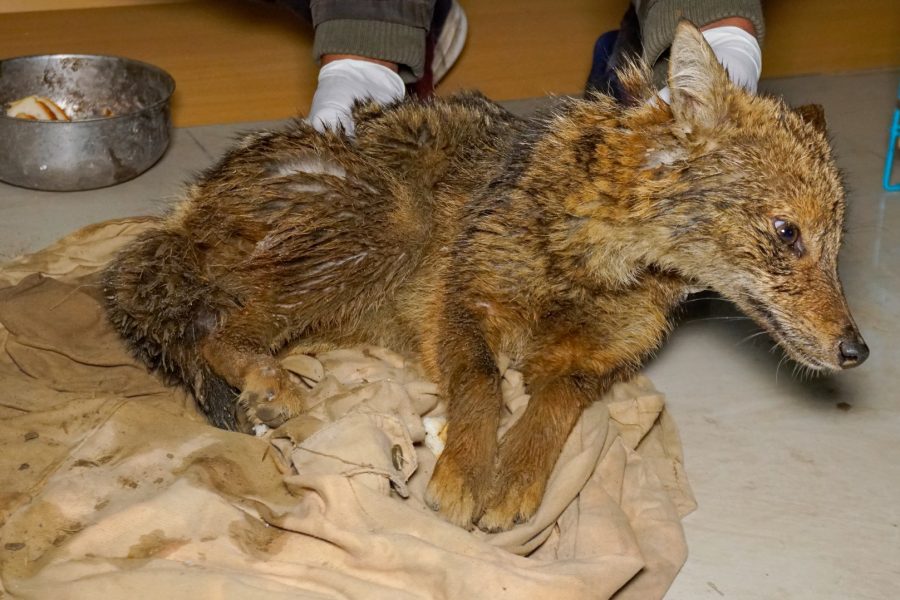A new day and a new menace for a leopard, as it escaped a narrow brush with death in Alkuti village located in Parner subdivision of Ahmednagar district, Maharashtra. In an unfortunate situation, a leopard fell victim to a silent killer. This has been plaguing wild animals for a long time but its presence can hardly be felt. Just like that, it can take a life without anyone even noticing. We are talking about open wells. But in the case of this leopard, timely intervention by Wildlife SOS & the State Forest Department helped save the big cat’s life after it fell into a 50-feet-deep open well.
A local farmer was shocked to find a leopard paddling helplessly to stay afloat in a nearly 50-feet-deep well in Alkuti village. Fearing that the felid may not survive much longer in the waist-deep water, he immediately informed the State Forest department. The Wildlife SOS team operating out of the Manikdoh Leopard Rescue Center was also called in for reinforcements. We instantly dispatched a four-member team, led by Mahendra Dhore, Veterinary Assistant, Wildlife SOS.
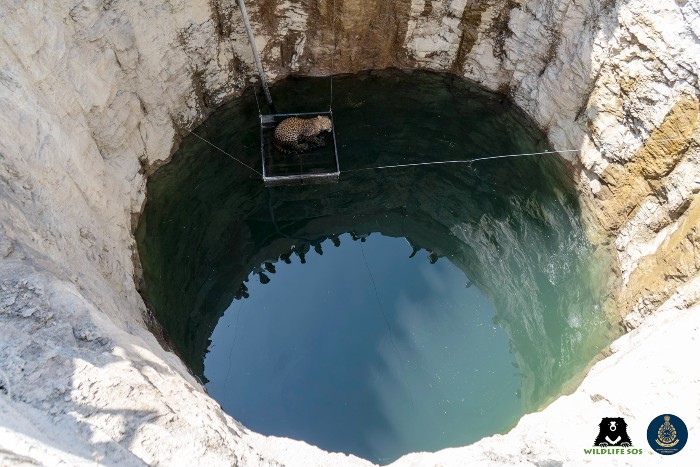
The team drove nearly 60 km to reach the location, but it was this long drive which aggravated our worry about the leopard’s safety and security. Meanwhile, with help from the villagers, a team of forest officers lowered a metal crate into the well so that the leopard could hold onto it for temporary support. The leopard looked admittedly scared of the crate initially, not understanding what to do with it. Moreover, the leopard’s minimal movement was a sign of severe exhaustion and dehydration.
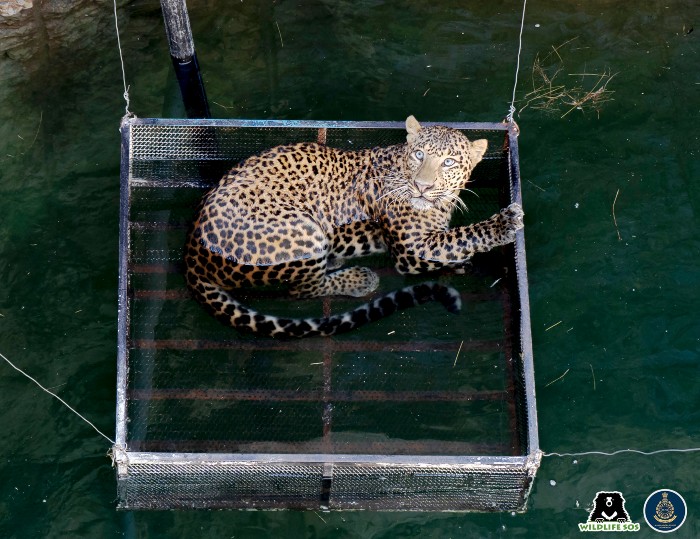
While the rescue operation was ongoing, understanding the safety of the animal, the rescue team ensured there was no gathering of an unnecessary crowd. In such tense rescue situations, the co-operation of the villagers is extremely important to not add to the existing chaos and panic. In this case, the villagers also played the role of saviours to secure the leopard’s safety.
Once the Wildlife SOS team arrived at the scene, the rescue operation was set in motion and a trap cage was lowered into the well to safely extract the leopard. Sensing help, the leopard exercised caution after carefully examining the scenario and leaped into the trap cage only to be carefully pulled up. The leopard was taken into a nearby forest nursery, where it was examined for any injuries. On examination, the leopard was found to be an approximately 7-year-old male and after receiving a green signal from the vet, was released back into the wild.
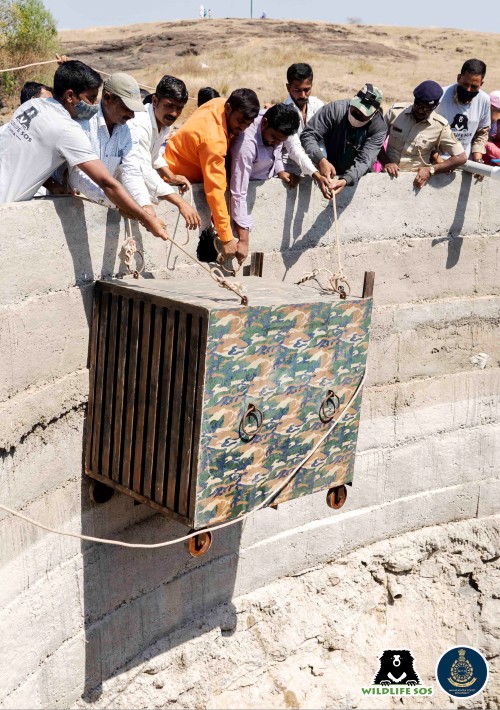
Wildlife SOS has been a pioneer in saving leopards from open and uncovered wells – both dry and wet – in India’s 3rd most leopard-rich state. The risk of open wells poses huge risks and causes immense woes to wild animals in general, and leopards are not exempt from it. Due to an overall fragmented landscape near leopard habitats and the lack of a contiguous forest, leopards often venture into human-dominated landscapes to prey on domestic cattle and livestock. Being nocturnal, these big cats are on the lookout for food during the night. While this helps them to avoid confrontation with human beings, it doesn’t necessarily save them from the danger of open wells.
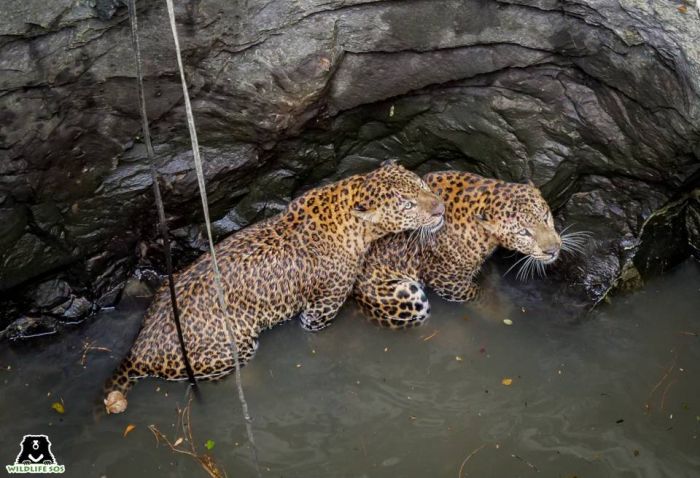
An open well is a large hole dug deep into the ground to reach the aquifers. A village may have an average of 200 wells and it is estimated that there are nearly 8.7 million open wells in India. These wells then unknowingly become killing machines, taking the lives of various animals, including the leopard. If a leopard falls into a very deep dry well, they are killed instantly or suffer serious and grave injuries if not rescued. If they fall into water-filled wells and are not rescued, they will suffer a miserable death by drowning.
Wildlife SOS has saved over 30 leopards from open wells and is investigating ways to cover these wells or give wildlife ways to escape on their own if they fall in. The fact that open wells are a huge threat and is not given enough importance as an issue is evident from the rescue of this male leopard from Alkuti village. By conducting more awareness programs and capacity building workshops, we intend to take measures against this massive Gordian knot.
If the villagers can be made more proactive in handling these complicated situations, such as in this case, then they can set an example for others to follow. It is not an easy problem to solve but a panacea is what we need so that in future, no leopard or any other animal has to suffer this fate. In order to do that, Wildlife SOS is trying to cover these wells across the state of Maharashtra to prevent such accidents from occurring. You can consider becoming a monthly donor to support this project and contribute significantly to save India’s wildlife.

